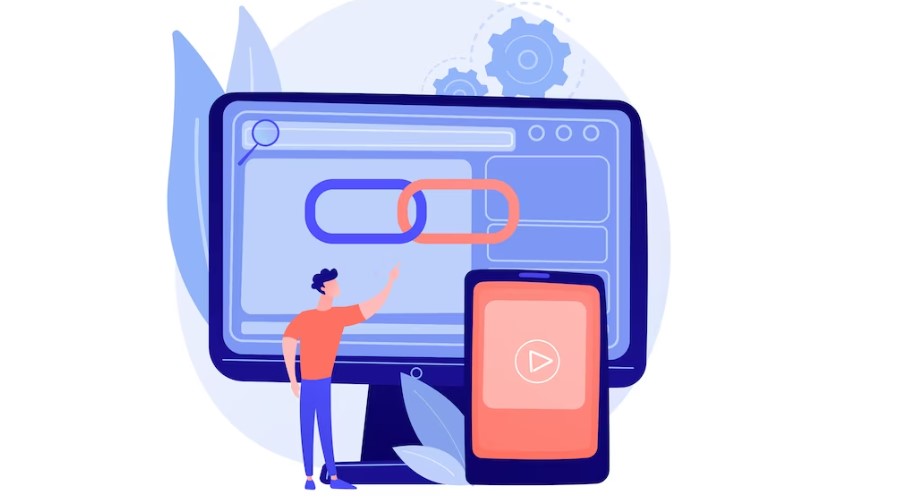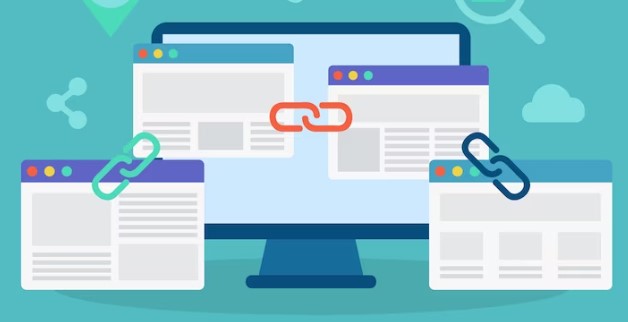Search engine optimization (SEO) is the practice of optimizing your website and its content to improve its visibility and ranking on search engine results pages (SERPs). As an online business, having a strong SEO strategy is crucial for attracting more organic traffic, increasing brand visibility, and ultimately driving more sales and revenue.
In this post, we’ll be covering ten important SEO-related aspects that every online business should be familiar with. These include:
Table of Contents
By understanding and implementing these SEO strategies, you can improve your website’s search engine ranking, drive more targeted traffic to your site, and ultimately grow your online business. So, without further ado, let’s dive into the details of each of these keywords and how they can help you achieve your SEO goals.
On-Page SEO:

On-page SEO refers to the practice of optimizing individual web pages in order to rank higher and earn more relevant traffic in search engines. It includes optimizing both the content and HTML source code of a page.
Importance of Keyword Research in On-Page Optimization:
Keyword research is a crucial part of on-page optimization. By researching and targeting the right keywords, you can ensure that your content is being targeted toward the right audience and that you are not competing against highly competitive keywords.
Tips for Optimizing Title Tags, Meta Descriptions, and Header Tags:
Title tags, meta descriptions, and header tags are all important on-page SEO elements that can have a significant impact on your search engine ranking. Some tips for optimizing these elements include using target keywords, writing compelling and unique meta descriptions, and using header tags (H1, H2, H3, etc.) to structure your content in a logical and easy-to-read way.
Strategies for Creating High-Quality Content that Incorporates Target Keywords:
Creating high-quality, informative, and engaging content is an important part of on-page SEO. By incorporating target keywords naturally into your content, you can increase its relevance and visibility in search engines. Some strategies for creating high-quality content include conducting thorough research, providing value to your audience, and using visuals and other multimedia elements to enhance your content.
Discussion of E-A-T and Its Relevance to On-Page SEO:
E-A-T stands for “Expertise, Authority, and Trustworthiness,” and it is a set of guidelines used by Google to assess the quality and relevance of websites and their content. E-A-T is becoming increasingly important in on-page SEO, as it emphasizes the need for high-quality, trustworthy content that is written by experts in their respective fields. By focusing on E-A-T, you can improve your website’s search engine ranking and attract more targeted traffic to your site.
Backlinks:

A backlink is a link that one website gets from another website. It is a way for search engines to determine the popularity and authority of a website based on the number and quality of links pointing to it.
Importance of Backlinks for SEO:
Backlinks are an important ranking factor for search engines. Search engines use backlinks to evaluate the quality and relevance of a website. The more high-quality backlinks a website has, the more likely it is to rank higher in search engine results pages (SERPs).
Tips for Building High-Quality Backlinks:
To build high-quality backlinks, you should focus on creating valuable and informative content that other websites will want to link to. Other tips for building high-quality backlinks include guest blogging on other relevant websites, participating in forums and discussion boards, and creating shareable infographics and other visual content.
Link Diversity and Anchor Text Optimization:
Link diversity refers to the variety of sources that links are coming from. By having a diverse range of backlinks, you can demonstrate to search engines that your website is popular and authoritative across a range of relevant topics. Anchor text optimization refers to using relevant keywords in the anchor text of a backlink to improve the relevance and visibility of the linked-to page.
Monitoring Backlinks and Disavowing Spammy Links:
It’s important to monitor your backlinks regularly to ensure that they are high-quality and relevant. You can use tools like Google Search Console and Ahrefs to monitor your backlinks. If you identify spammy or low-quality backlinks, you can disavow them using Google’s disavow tool. This helps to ensure that they don’t negatively impact your website’s search engine ranking.
Keyword Research:

Keyword research is the practice of identifying and analyzing the keywords and phrases that people use to search for information, products, or services online. It is an important aspect of SEO as it helps you understand what your target audience is looking for and how you can optimize your content to match their search queries.
Importance of Keyword Research for SEO:
Keyword research is crucial for SEO because it helps you understand the language and terms that people use to find information related to your business. By targeting the right keywords, you can improve the relevance and visibility of your content in search engine results pages (SERPs), driving more traffic to your website and ultimately improving your business’s bottom line.
Strategies for Finding High-Volume, Low-Competition Keywords:
To find high-volume, low-competition keywords, you can use strategies such as analyzing your competitors’ keywords, using long-tail keywords and using keyword research tools. Long-tail keywords are longer and more specific search queries that typically have lower competition and higher conversion rates.
Tools for Conducting Keyword Research:
There are several tools available for conducting keyword research, including Google Keyword Planner, Ahrefs Keyword Explorer, SEMrush Keyword Magic Tool, and Moz Keyword Explorer. These tools can help you identify the search volume, competition level, and other important metrics for your target keywords, enabling you to make informed decisions about your SEO strategy.
Link Building:

Link building is the process of acquiring hyperlinks from other websites to your own. It is an important aspect of SEO as it helps search engines determine the popularity and relevance of your website based on the number and quality of links pointing to it.
Different Types of Links:
There are several types of links, including dofollow, nofollow, internal, and external links. Dofollow links are links that search engines can follow and pass on link juice to the linked-to page. Nofollow links, on the other hand, are links that search engines do not follow and therefore do not pass on link juice. Internal links are links within your own website, while external links are links from other websites to your own.
Tips for Building Natural and High-Quality Links:
To build natural and high-quality links, you should focus on creating valuable and informative content that other websites will want to link to. Other tips for building natural and high-quality links include creating shareable infographics and other visual content, participating in forums and discussion boards, and reaching out to relevant websites and influencers in your industry.
Guest Blogging and Broken Link Building:
Guest blogging involves writing articles for other websites and including a link back to your own website in the author’s bio or within the article itself. Broken link building involves finding broken links on other websites and reaching out to the website owner to suggest a replacement link, which could be a link to your own website. These are effective link-building strategies that can help you build high-quality and relevant links to your website.
Content Marketing:

Content marketing is the process of creating and sharing valuable and relevant content to attract and engage a specific target audience. It is an important aspect of SEO as it helps you improve your website’s search engine rankings by creating high-quality content that meets the needs and interests of your target audience.
Importance of Content Marketing for SEO:
Content marketing is important for SEO because it helps you create high-quality content that attracts backlinks and social media shares, which are important factors in search engine rankings. By creating valuable and informative content that meets the needs of your target audience, you can increase your website’s visibility in search engine results pages (SERPs) and drive more traffic to your website.
Strategies for Creating and Promoting High-Quality Content:
To create and promote high-quality content, you should start by identifying your target audience and their needs and interests. You can then create content in different formats such as blog posts, infographics, videos, and social media posts that provide value to your target audience. Other strategies for creating and promoting high-quality content include guest blogging, influencer marketing, and content distribution through social media and email marketing.
Types of Content:
There are different types of content that you can create, such as blog posts, infographics, videos, podcasts, and whitepapers. Each type of content has its unique strengths and weaknesses, and it’s important to choose the type of content that best suits your target audience and marketing goals.
Measuring the Success of Content Marketing Efforts:
To measure the success of your content marketing efforts, you should track metrics such as website traffic, engagement metrics (e.g., shares, likes, comments), backlinks, and conversions. You can use tools such as Google Analytics and social media analytics to track these metrics and identify areas for improvement in your content marketing strategy.
Technical SEO:
Technical SEO refers to the optimization of a website’s technical elements to improve its search engine visibility, performance, and user experience. It involves optimizing various aspects of a website such as its code, structure, and server settings to ensure that search engines can crawl and index it easily.
Importance of Technical SEO for Website Performance and User Experience:
Technical SEO is important for website performance and user experience because it helps search engines crawl and index your website easily, which can improve your website’s visibility in search engine results pages (SERPs). Technical SEO can also help improve website speed, mobile-friendliness, and user experience, which can lead to higher engagement and conversion rates.
Tips for Optimizing Website Speed and Mobile-Friendliness:
To optimize website speed and mobile-friendliness, you should start by conducting a website audit to identify any issues that may be affecting website performance. Some tips for optimizing website speed include compressing images, minimizing HTTP requests, and optimizing code. To optimize for mobile-friendliness, you should ensure that your website is responsive, has a mobile-friendly design, and uses mobile-friendly fonts and images.
Explanation of Website Structure and Site Maps:
Website structure refers to the organization and hierarchy of pages on a website. A well-organized website structure can help search engines understand the content and context of your website, which can improve your search engine visibility. Site maps are a key component of technical SEO, as they provide a list of all the pages on your website, which can help search engines crawl and index your website more efficiently. A site map can also help users navigate your website more easily, which can improve their user experience.
Local SEO:
Local SEO refers to the process of optimizing a website to improve its visibility in local search results. It involves optimizing a website’s content and structure to target local search queries, as well as managing its online presence across various local directories and platforms.
Importance of Local SEO for Small and Local Businesses:
Local SEO is especially important for small and local businesses because it helps them attract and engage local customers who are searching for products or services in their area. By optimizing their online presence for local search, businesses can increase their visibility in local search results, drive more traffic to their website, and generate more leads and conversions.
Strategies for Optimizing Local Search Listings and Google My Business Pages:
To optimize local search listings and Google My Business pages, businesses should ensure that their name, address, and phone number (NAP) information is consistent and accurate across all online directories and platforms. They should also optimize their website’s content and structure to target local search queries, and use local keywords in their meta tags and content. Additionally, they should regularly update their Google My Business page with new photos, posts, and updates to keep their profile fresh and engaging.
Discussion of Local Link Building and Review Management:
Local link building involves acquiring high-quality links from local websites and directories, which can help improve a website’s local search ranking. Review management involves monitoring and responding to online reviews from customers, which can help businesses improve their online reputation and attract more customers. Both local link building and review management are important components of local SEO, as they can help businesses improve their online presence and attract more local customers.
Google Algorithm Updates:
Google algorithm updates refer to the changes and updates that Google makes to its search algorithm to improve the quality of search results for users. These updates can have a significant impact on SEO, as they can change the way that websites are ranked in search results.
Impact of Google Algorithm Updates on SEO:
Google algorithm updates can have a significant impact on SEO, as they can affect a website’s search ranking and visibility. Some updates may penalize websites that use black hat SEO tactics, while others may reward websites that have high-quality content and user-friendly design.
Recent and Upcoming Updates:
Two recent updates that have had a significant impact on SEO are the BERT update and the Core Web Vitals update. The BERT update improved Google’s ability to understand natural language queries, while the Core Web Vitals update focused on improving user experience by prioritizing websites with fast loading times, mobile-friendliness, and good visual stability.
Strategies for Adapting to Algorithm Updates and Staying Up-to-Date with SEO Best Practices:
To adapt to algorithm updates and stay up-to-date with SEO best practices, businesses should focus on creating high-quality content that is relevant and useful to their target audience. They should also ensure that their website is user-friendly and optimized for mobile devices, as well as monitor their website’s performance and make necessary updates to improve speed and usability. Additionally, businesses should stay up-to-date with the latest SEO trends and best practices by following industry experts and attending conferences and webinars.
Mobile Optimization:
Mobile optimization refers to the process of designing and optimizing websites to provide an optimal experience for mobile users. This involves ensuring that the website is easy to navigate, loads quickly, and is visually appealing on smaller screens.
Importance of Mobile Optimization:
Mobile optimization is crucial for website performance and user experience, as more and more users are accessing websites on their mobile devices. A website that is not optimized for mobile devices can be difficult to navigate and slow to load, which can result in a poor user experience and higher bounce rates.
Tips for Optimizing Website Design and Functionality for Mobile Devices:
To optimize website design and functionality for mobile devices, businesses should focus on creating a responsive design that adapts to different screen sizes. They should also simplify navigation and reduce clutter to make it easier for users to find what they are looking for. Additionally, businesses should optimize images and videos for mobile devices, and ensure that website forms are easy to use on smaller screens.
Discussion of Responsive Design and Mobile-First Indexing:
Responsive design is a design approach that allows websites to adapt to different screen sizes and devices, providing a consistent user experience across all platforms. Mobile-first indexing is a change in Google’s search algorithm that prioritizes mobile-optimized websites in search results. This means that businesses that have mobile-friendly websites are more likely to rank higher in search results and attract more traffic.
Conclusion:
In this post, we covered ten important SEO-related keywords, including on-page optimization, backlinks, keyword research, link building, content marketing, technical SEO, local SEO, Google algorithm updates, and mobile optimization. We provided definitions and explanations of each keyword, as well as tips and strategies for optimizing each aspect of SEO.
SEO is a critical aspect of online business success, and ongoing optimization efforts are essential to maintaining and improving search rankings, traffic, and visibility. By implementing the strategies and tips outlined in this post, businesses can improve their website’s performance, user experience, and search engine rankings. By staying up-to-date with the latest SEO best practices and adapting to changes in search algorithms, businesses can continue to attract and retain customers and remain competitive in their industries.
